This flight test of the Vulcanair V1.0 by Owen Zupp first appeared in the June 2019 edition of Australian Aviation.
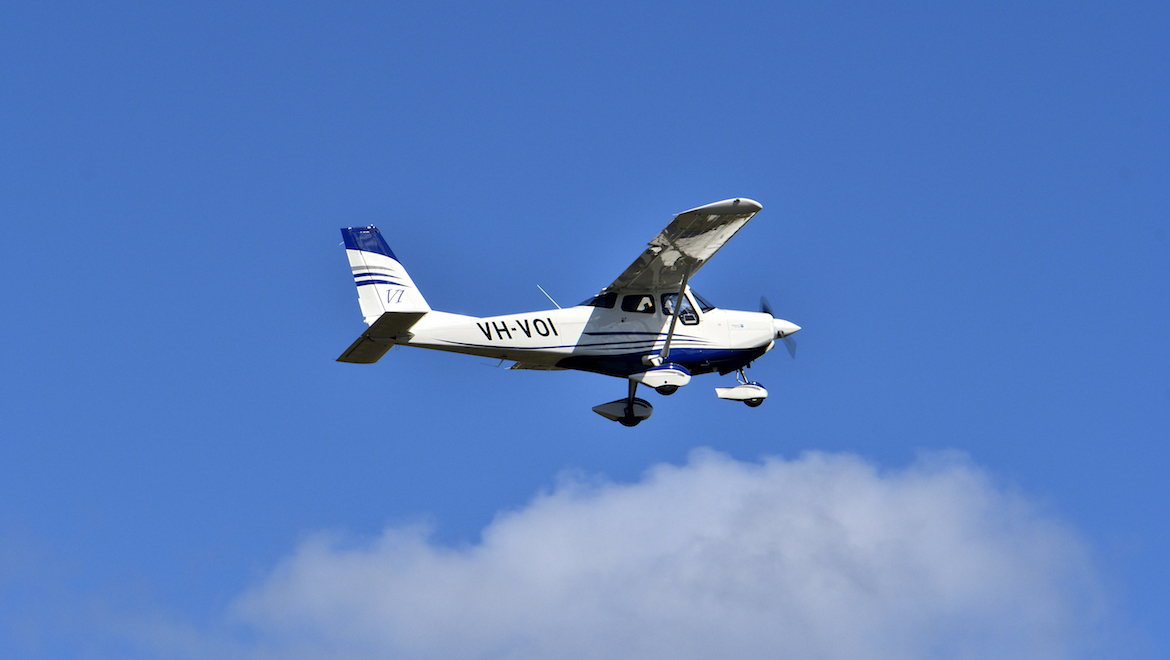
When you think of Italian design, certain images come to mind. The unmistakable lines of a sleek scarlet Ferrari sports car, while everything from fashion to furniture can catch the eye with its style. However, there is something different emerging from the Vulcanair factory in Naples – The Vulcanair 1.0. And while this high-winged, singled-engined aircraft may not exhibit the traditional Italian flashiness, its beauty is most definitely more than skin deep.
A new take on a classic theme
The first Vulcanair V1.0 only came to Australian shores at the beginning of 2019, although its origins truly lie in the 1960s. As the Partenavia P.66, or “Oscar”, it was seen as Europe’s answer to the venerable Cessna 172 with over three hundred of the type being built through a range of variants. When Vulcanair emerged as a company in the late 1990s, it acquired the assets, rights, trademarks and designs of Partenavia. Therein lay the potential for Vulcanair to resurrect and redefine the “Oscar” for the 21st century.
In doing so, after all these years, the Cessna 172 remained the incumbent aircraft in the category and across the board, that is where the comparisons continued to be made. However, as much as the V1.0 might cause a double-take for a Cessna 172 owner, the aircraft exists in its own right with defining features, not least of which is its price tag.
Vulcanair’s head of sales and marketing in Australia Paul Southwick enthusiastically relates that the V1.0 costs US$100,000 less than a comparable Cessna 172. In these times, when flying schools are considering replacing their aging aircraft, this equates to more than a significant saving when purchasing a fleet. Aside from the price tag, the V1.0 also possesses design traits that make it attractive to flight training organisations and rural owner/operators alike. Unlike certain other emerging contenders, the V1.0 is a metal airframe with directly-linked nosewheel steering and industrial-looking flap hinges and fixtures.
This aircraft is not a Ferrari Pista or an Armani suit. While its interior shows stylish traits, the V1.0 is unashamedly functional and coupled with an attractive price tag, it is turning heads for very different reasons.
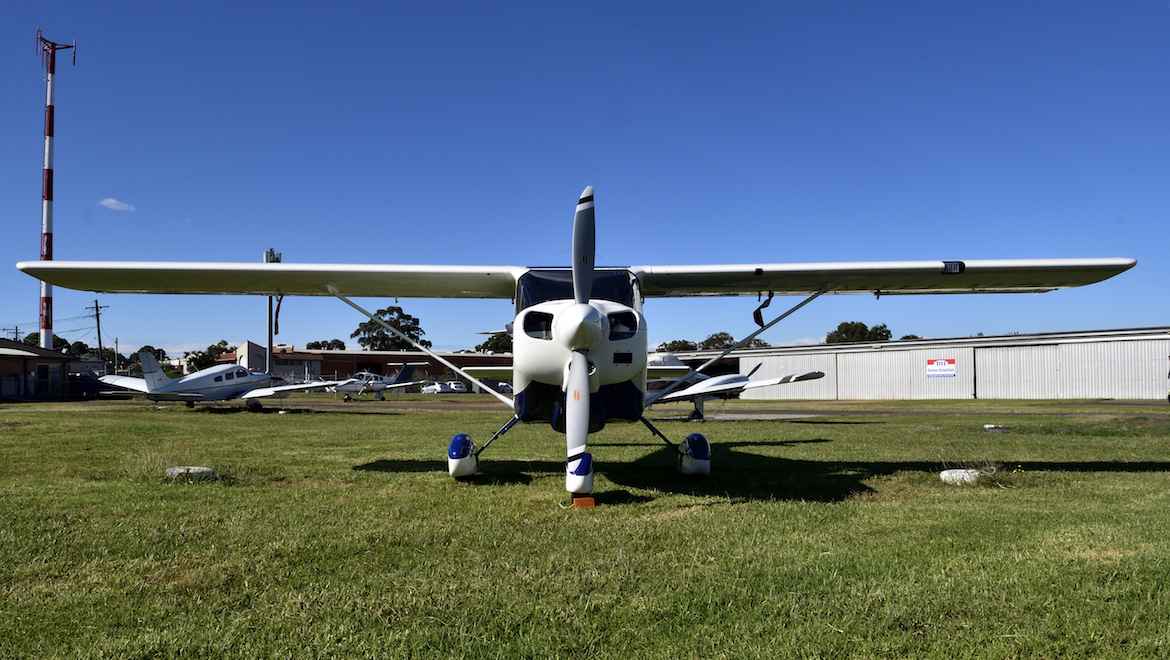
From the ground up
Vulcanair’s Southwick and I meet at the Sydney Flying Club premises at Bankstown Airport and for me it’s somewhat of a time warp. The building stands at the site of a flying school where I was the Chief Flying Instructor about 30 years ago and seeing the rows of seated students studiously flight planning brings a smile. Outside, the V1.0 is parked, flanked by a range of other “singles”, new and old. There is hardly a cloud in the sky, although the wind is picking up, and the aircraft is beckoning to go flying.
Firstly, we chat about the new Vulcanair, and aviation in general, before we brief the flight sequence. Having studied the Pilot’s Operating Handbook (POH) over the preceding week, I am impressed with the aeroplane on paper but also highlight some anomalies within the POH. Some points and procedures may have been lost in translation, while others will require further clarification to satisfy the keen young eyes and inquiring minds of student pilots and their instructors alike. That being said, I am keen to fly the V1.0.
Approaching the aircraft, the parallels to the Cessna 172 externally are immediately obvious. One engine, high wing and nosewheel and with a wing span of 9.98m and a length of 7.23m, the V1.0 is a metre shorter on each count. More closely examining the aircraft from the flank, the rear fuselage appears to be slimmer than a 172 and the dorsal fin much shorter, even though the fin is of a similar height at 2.77m. I defer to the aerodynamicists, but I suspect that the lesser profile to the rear of the aircraft may be linked to the Vulcanair’s higher maximum demonstrated crosswind component of 20kts as opposed to the Cessna 172’s 15kts.
Commencing the “walkaround” at the pilot’s side door, the first noticeable difference is that the wing strut is aft of the door, which would seem to enhance visibility from the front seats. The door handle is a simple, sliding latch aligned so that the air flow would tend to push it towards the closed position.
The leading edge features LED landing lights, while on the trailing edge of the wings the electrically actuated flaps have settings of 14 degrees for takeoff and either 28 degrees or full at 42 degrees for landing. Each wing has an internal fuel tank for a total useable capacity of 190 litres. Each tank has a fuel cap on the upper surface of the wing and a forward-facing fuel vent to make use of the ram air effect. Operating the aircraft at 75 per cent power at 6,000ft, the book figures offer a true airspeed (TAS) of 128kts and using around 43 litres per hour. With 65 per cent power the numbers are 120kts and 39 litres per hour which equates to around four hours flight time plus reserves.
In terms of payload, the V1.0 will lift four 80kg people by reducing the fuel to around 120 litres. A more likely scenario would be full fuel, three people and a little baggage. This is particularly relevant as some flight schools send a third student along on navigation exercises as an observer. One thing to consider is that the maximum takeoff weight (MTOW) of 1,155kg is not matched by the maximum landing weight (MLW) of 1,100kg. In the event of a return to land, that additional fuel would need to be consumed down to the MLW. In the event of an immediate return to land overweight, the subsequent action is unclear beyond the POH warning relating to “Exceeding the weight limits . . .”. One might expect that in keeping with other types it would call for a maintenance release entry and an inspection of some description.
The tricycle undercarriage is comprised of spring steel for the main landing gear, while the nosewheel possesses an oleo. At the rear of the aircraft, the tail section is conventional and features a stabilator, or all-flying tail. Noteworthy is that the stabilator is operated by dual pushrods, rather than a single rod.
On the starboard side, there is a cargo door for the baggage area of 40kg capacity which can also be accessed in flight from the rear seat.
In turn, the rear seat is accessible from an independent, third cabin door which, like the main doors, are constructed of lightweight but strong composite material.
Beneath the cowling of the Vulcanair V1.0 is the familiar Lycoming IO-360 M1A engine, rated at 180hp at 2,700rpm. The fuel-injected Lycoming also features a two-bladed, constant speed Hartzell propeller. This is an interesting difference to the Cessna 172 as the constant speed unit (CSU) means that the V1.0 is suitable for commercial flight training. Undoubtedly another benefit for prospective flight school customers.
Leaving the external inspection behind, entry to the aircraft is easy via a single step attached to the airframe just below the door sill. Visible airframe “down tubes” extend vertically at each corner of the cabin. At the front, these are reminiscent of an Auster or a Piper Cub but are offset well to the side to not impede the forward vision. However, they are very convenient handholds for climbing aboard or when adjusting the seat position.
Inside, the finish is extremely tidy and functional with adequate room between the front seats to offer the student and instructor a little personal space as well. On the floor between the seats are USB ports, with further ports available to the rear seats. Ahead of these is the rotary parking brake selector emblazoned with “Lock” and “Unlock” which is operated in conjunction with positive pressure to the toe brakes.
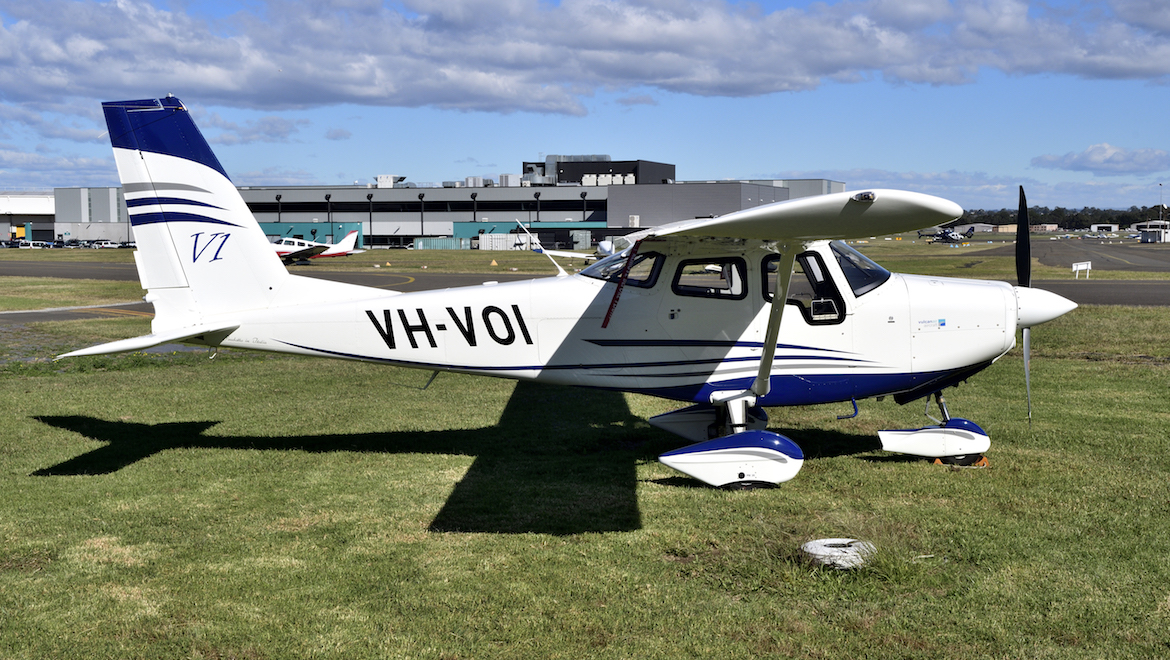
Next comes the headset jacks and the positioning of these is a passive barrier between the parking brake and the all-important fuel selector. Thankfully, like an increasing number of modern fuel selectors, it is clear and unambiguous. Easily accessible by both pilots, bright red in colour, marked clearly to “Left” or “Right”, it requires two positive actions to select the fuel to “Off”.
Less obvious are the cabin heater and alternate air selector, although both have very ergonomically distinct shapes to avoid confusion. From here the centre control suite rises to an impressive throttle quadrant. Cleanly machined, metallic and sturdy, the throttle, pitch and mixture levers are distinctly different and with relatively short shafts, easy to manage. To the left of the quadrant, the trim wheel sits near the pilot’s right knee. It’s a very comfortable position and is akin to the positioning in the Cessna 337.
The instrument panel continues in a very streamlined and logical theme, combining modern glass cockpit avionics and straightforward old-school switching. I am sure the original P.66 looked nothing like this on the inside.
Directly in front of the pilot the Garmin G500 provides a pair of screens made up of the primary flight display (PFD) and the multi-function display (MFD), which portrays a clear digital map. The GTN650 sits just to the right and this console is home to a touchscreen that facilitates navigation, comms, transponder and GPS. To the far right is the EDM930 engine monitoring screen which, through its display of digital round gauges and vertical bars, conveys information ranging from temperatures and pressures to RPM and manifold pressure to fuel flow
and quantity, electrical system status and more.
Just beneath the glareshield at the top of the panel, an independent digital standby presentation sits above the GTN650, while an annunciator panel sits in the pilot’s eye-line above the Garmin 500 unit. Between the two is a small LED panel which relays the RPM and manifold pressure to minimise the scan across to the engine monitoring panel on the far side.
The flap selector and indicator sit central and low on the panel, while the lowest edge is home to the electrics, including switches for lights and pitot heat as well as the circuit breakers which are clearly placarded and logically grouped. A nice touch is that the alternator circuit breaker sits independently on the far left which could be found easily by feel, or by the emergency torch that is stowed directly beneath on the sidewall. Moving up, and again very well thought out and labelled, are the switches needed predominantly at the start and conclusion of each flight – ignition key, master switch, alternator, fuel pump and avionics master.
The primary flight controls feature rudder pedals of a simple construction, equipped with toe brakes. Dominating the panel are two large, stylish control columns with leather grips, a push-to-talk switch and a chronometer in the boss of the pilot’s yoke. Shaped distinctly, they almost resemble a “V for Vulcanair” but in fact the clipped shape enables full and free movement of the controls without quite striking the other pilot’s knees.
Stepping out of the aircraft and with loose rocks about, Paul and I use the tow-bar and strut to pull the aircraft onto the hardstand. With the aircraft now in position, all that remains is to climb aboard and take flight. [vc_gallery interval=”0″ images=”75217,75224,75223,75222,75221″ img_size=”750×420″ title=”Inside the Vulcanair V1.0 (Images by Grahame Hutchison)”]
Airborne
Bringing the Lycoming IO-360 to life is familiar and is accomplished once the avionics have come to life to present the engine display. It is then time to slightly open the throttle and with the fuel pump and battery switch on, advance the mixture control until a positive fuel flow registers. With the engine now primed, the mixture is returned to idle-cutoff. “Clear Prop!”, the key is moved to start and the engine comes to life. In a timely manner, the mixture is advanced to “full rich” before the engine can splutter. It doesn’t cough at all but smoothly idles with the revs set to 1,000rpm as the after-start sequence is completed and the alternator switch is selected to “ON”.
We copy the latest weather information and the wind has picked up, with the crosswind occasionally reaching 18 knots but otherwise the sky is clear. Releasing the parking brake, we taxi off and despite Paul’s warning that the nosewheel steering may feel heavy by comparison, I found it to be positive, direct and easy to manage in an era when castering nosewheels and differential braking have made a comeback.
In the run-up bay we change the fuel tanks to the fullest tank and complete the engine run-ups as well as the pre-takeoff checklist and emergency briefing. The Lycoming offers no surprises and it seems to be a good, trusted fit for the newly revived Vulcanair airframe.
Cleared for takeoff, we line up for a departure straight ahead to the west, executing a short field takeoff as briefed. The aircraft is held on the brakes until full power and 2,700rpm is confirmed along with the other critical engine indications. When the brakes are released, we accelerate quickly and despite the crosswind, directional control is straightforward. After only about 250m we achieve 65kts and I rotate the aircraft to
climb away, initially at 70kts in gusty conditions.
At this speed the forward vision is compromised, but the low cut-out that extends the side window down to a lower level offers a handy outlook for both traffic and our tracking relative to the runway. Clear of the theoretical obstacle, the nose is lowered for a climb speed of 80kts and the visibility ahead is restored. All the while, the overhead skylight extending rearward from the top of the windscreen offers enhanced lookout for aircraft above, particularly when in the climb phase.
Paul recommends full throttle and 2,600rpm for the climb as 2,700rpm can trigger a reminder on the EDM930 of the maximum rpm. I opt to keep the numbers square at 26”/2,600rpm and at 80kts the V1.0 is comfortably climbing away at 700ft/minute. Even better, as we are pushing into a strong westerly breeze and bound for the training area, a 90kts cruise climb offers a speedier transit, better visibility with a minimal sacrifice in the rate of climb. Throughout the range of climb speeds, there was minimal rudder input required and when trimmed, the aircraft was extremely stable, given the gusty conditions.
Established in the training area, a range of configurations were examined. Slow speed cruise with 20” MAP had the aircraft sitting comfortably at around 90kts IAS, with good control response and adequate lookout ahead. With cruise power re-established at 24’’/2,400rpm, steep turns to the left and right were conducted and again the “eyebrow” skylight was a tremendous asset to the visibility, but the stability was the highlight. At 45 degrees and even when 60 degrees of bank was reviewed, the aircraft was extremely stable. Without trimming, the elevator control forces were very manageable as the V1.0 swept around the horizon and reversing the direction of turn was straightforward.
Reducing power and maintaining attitude for the clean configuration stall, the nose gradually rose to a slightly lower nose attitude to similar types before a blaring horn and then a buffet signalled that the stall was reached. The signs and symptoms disappeared immediately when the nose was lowered, with a minimal loss of height before power was reintroduced and a climb established.
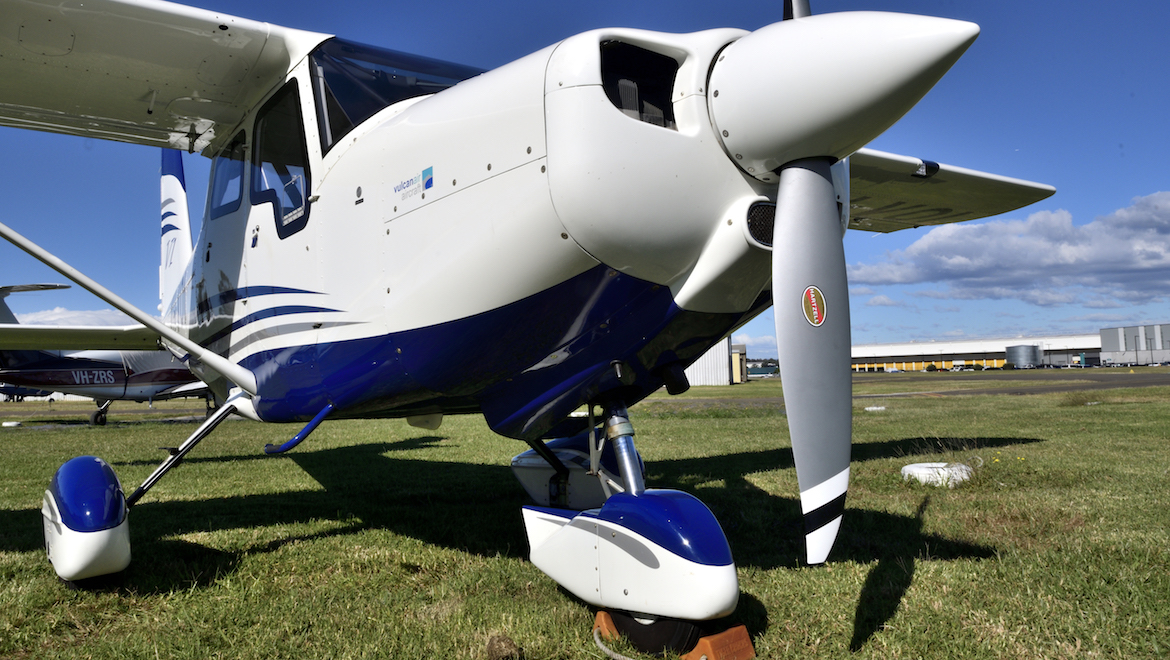
Configuring for a stall in the approach configuration, there is a significant pitch change as each stage of flap is extended but again it is easily countered. At this time, and throughout the flight, the convenience of the trim wheel position and the effectiveness in its role were first class. In conjunction with its inherent stability, hand-flown cross-country flights should not prove to be overly taxing for students.
Below Vfe of 78kts and with full flaps extended, the power is reduced for an approach configuration stall. The onset is benign, with a slight tendency to “wing drop” that is telegraphed early and smoothly and easily managed with minimal rudder input. Stall and recovery are without event.
Before we head back to Bankstown, we wash off altitude by configuring the aircraft clean to glide at the recommended speed of 80kts. Control effectiveness is as anticipated – slow but positive. It’s difficult to note a rate of descent as by now the conditions are bouncing both us – and the vertical speed indicator – around somewhat. However, the POH suggests a gliding range in still air of around 8 miles at 5,000 feet and I would suggest that those numbers are definitely in the ballpark. Returning to the circuit at Bankstown, we are directed to join downwind on the training side of the airfield. We are held at 1,500ft as there is an aircraft already established on downwind. Again, the cutaway lower windowsill proves its worth and I can easily sight the conflicting traffic. The stanchion separating the windows where the door closes is abeam the pilot’s head position, so lookout in that direction requires a positive head movement. And as for the high wing versus low wing debate, any aircraft requires the pilot to use a positive head movement to manage outlook given the aircraft design.
Ultimately, we maintain 1,500ft and fly a circuit overhead to join upwind. We are getting bumped around by the turbulence now but the V1.0 is relatively stable with no tendency to wallow around, even when the speed is reduced in the pattern. Below 78kts, with 20” and approaching the base turn, I extend the first stage of 14 degrees of flap and trim. Notably, for a straight-wing aircraft, the first stage of flap has minimal effect on bleeding off the speed and it is only the selection of 28 degrees for the landing that the speed washes back to approach at 70kts. Full flap is 42 degrees, but Paul suggests that it is best for STOL operations and not necessarily in the current conditions.
On speed and in trim, the V1.0 just sits there. With the pitch fully fine, over the threshold the throttle is smoothly retarded, and the flare commenced. If anything, I over-flare the V1.0 which extends the float a little. Similarly, given the 15-18 knots of crosswind, I initially feed in too much aileron and rudder, which I immediately back off. Settled in the slot, we touch down before advancing the throttle, retracting the flaps to 14 degrees and going again.
I am impressed. Even approaching the maximum demonstrated crosswind component, I felt the V1.0 had quite an amount of control authority remaining as we flared. Lessons learned, I subsequently configure earlier for the approach, flare to a slightly lower nose attitude and apply slightly lesser control inputs to counter the crosswind and the V1.0 makes a challenging crosswind landing seem easy. This aircraft has real potential but for now, it’s time to head back to the flightline and shut down.
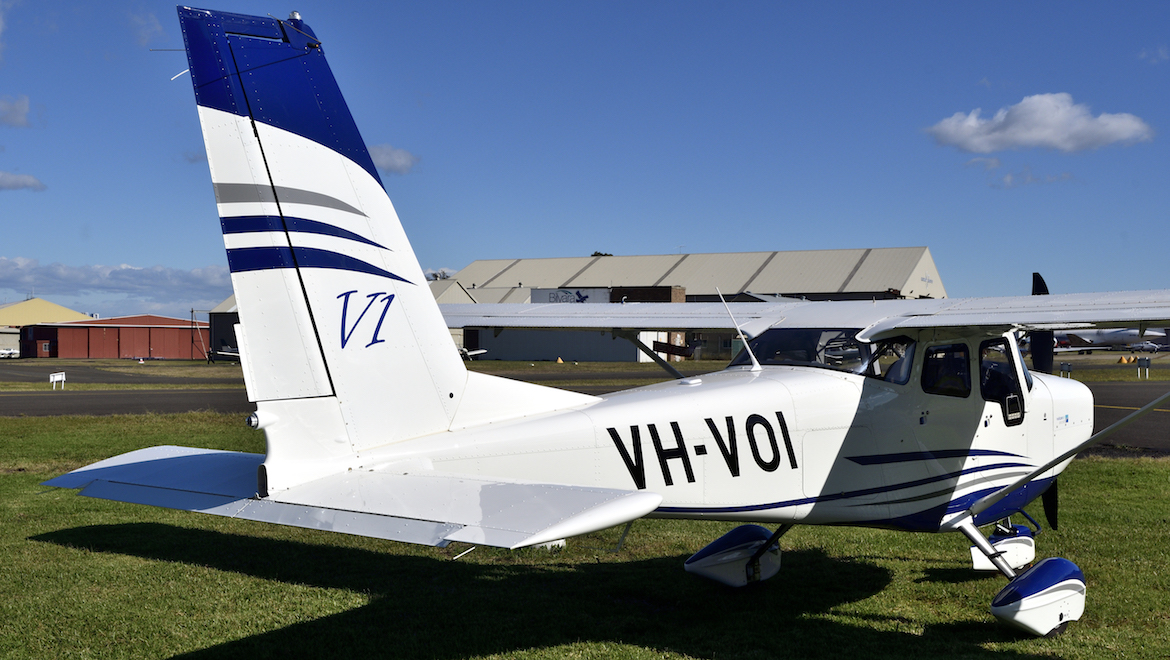
A surprise package
I approached this flight review having thoroughly read the POH but with very few expectations. While recognising that it may be seen as a Cessna 172 challenger, I endeavoured to view the V1.0 in its own right. Delaware State University in the United States has placed an order for 10 aircraft, so how would a flying school consider this aircraft with a view to a fleet acquisition?
Obviously, the price being US$100,000 less than a Cessna 172 is the major attraction but let’s not forget that the CSU also allows training through to commercial licence standard. One type across the fleet – economies of scale? As a new aircraft rather than an ageing one, dispatch reliability should be significantly better as long as spare parts support is readily available. The choice of a Lycoming powerplant goes a long way towards that aspect.
As a relatively new type in its current form, it is still to get runs on the board with operators and that reputation and longevity can only come with time and further sales. However, based on the aircraft as it was flown on a windy day at Bankstown it demonstrated a range of qualities that will undoubtedly grab the attention of prospective buyers. A metal airframe, a well equipped and thought-out cockpit, adequate performance aided by a CSU, and very stable handling characteristics through the range of the envelope.
Rather than being considered a mimic or a challenger, the Vulcanair V1.0 is a realistic option, standing on its own. It may not have the flash and flair of a Ferrari but this surprise package has the potential to catch the eye for even better reasons.
https://www.facebook.com/369708363447718/videos/vb.369708363447718/288078685162183/
VIDEO: A look at the Vulcanair V1.0 from the Vulcanair Aircraft Australia Facebook page.
This story first appeared in the June 2019 edition of Australian Aviation. To read more stories like this, become a member here.












